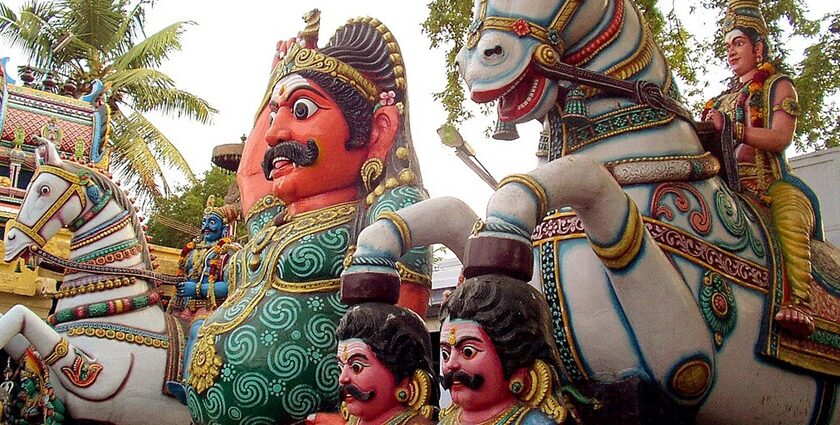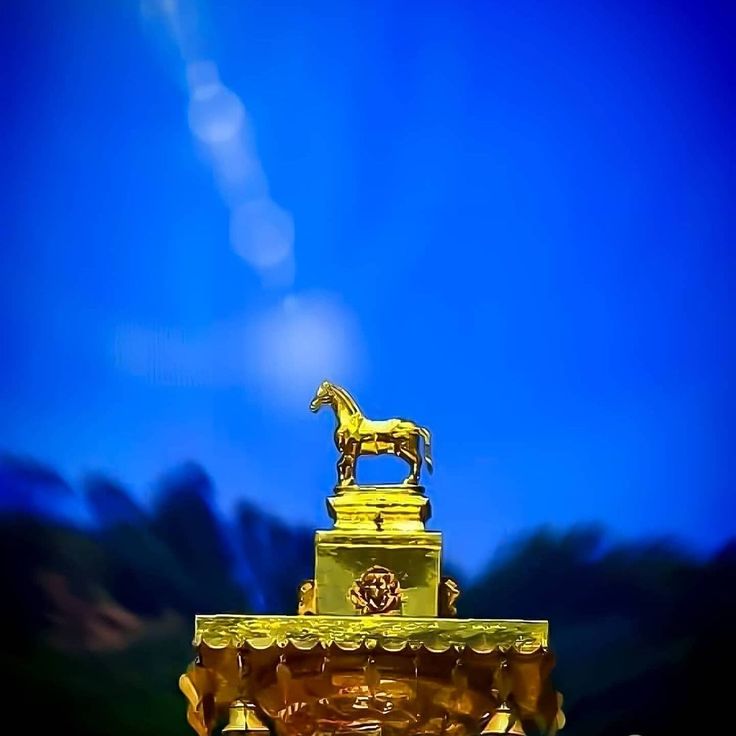Sastha: One Divine, Many Forms Across Time, Place, and People

In Indian spiritual thought, divinity often appears in many names and forms—tailored to the time, place, and needs of the community. But could it be that many of these forms are actually different faces of the same Divine presence?
Let us explore the stories, rituals, icons, and inscriptions surrounding Ayyanar, Ayyappan, Murukan, Chattan, and Vishnumaya—and examine whether they all point toward one unifying source: Sastha, the Teacher and Protector.
Dharmasāstha

In Sanskrit sources, “Dharmasāstha” is the divine born of Śiva and Mohinī, protector of dharma. The Bhāgavata Purāṇa (6.11.23) states:
A 3rd-Century Clue: Ayyanar and Chattan
An inscription from the 3rd century CE, found on hero stones in Arcot (Tamil Nadu), reads:
Why is this significant? It shows that two seemingly distinct names—Ayyanar and Chattan—were associated with the same shrine. This was not a Puranic story, but a real-world dedication, etched in stone. It predates the rise of major pan-Indian temple traditions. This suggests a very early blending—or perhaps identification—of these figures under a common divine personality.
Ayyanar and the Protector Tradition
Ayyanar, still worshipped at the edge of villages across Tamil Nadu, is: A guardian deity, riding terracotta horses.
His shrines often have large terracotta horses, used in night patrols. He holds a whip, sword, and a curved stick. He is often seated in yogic posture with a meditation strap—just like Ayyappan.

Interestingly, his name "Chattan" is often used in older Tamil literature and inscriptions, linking him linguistically and culturally to that Arcot stone. Furthermore, in the Kanda Puranam (14th century)—a Tamil version of the Skanda Purana—there is a section called the "Maha Chattan Patalam" that tells Ayyanar’s story using the name Chattan, reinforcing the continuity across centuries.
Ayyappan and Ayyanar: Iconic Parallels
Now consider Ayyappan, the popular deity of Sabarimala in Kerala: He is seated in the same yogapatta pose as Ayyanar. He is called Dharma Sastha, a name meaning "Lord of Righteousness." In the Sabarimala temple, the flagstaff features a horse, closely resembling Ayyanar’s mount.


Moreover, the Sabarimala Sthala Purana states that Ayyappan is an avatar of Ayyanar, showing that local traditions see them as connected. Even though Ayyappan became popular only in the 20th century, many of his traits—his forest setting, guardian role, posture, and tools—closely match older forms of Ayyanar/Chattan.
The Concept of Sastha: A Unifying Title
In Sanskrit and Tamil traditions, the word Sastha means “Instructor, Guide, Lord”. It is not the name of one character but a title or role, applied to various divine figures. One system, called Ashta-Shasta, speaks of eight major forms: Dharma Shasta (linked to Ayyappan) Brahma Shasta (linked to Murukan) Others include Gnana Shasta, Veera Shasta, Veda Shasta, etc. So, Ayyappan’s identity as Dharma Shasta already places him within a larger framework of manifestations. And if Ayyappan and Ayyanar share origin stories and symbols—could both be expressions of the same Sastha principle?
Murukan as Brahma Sastha: The Divine Teacher
Murugan (or Kartikeya/Skanda) is also linked to Sastha through the title Brahma Sastha—the one who taught Brahma.

In the Skanda Purana, he asks Brahma to explain Om. When Brahma fails, Murugan imprisons him and takes over creation—proving his divine authority and knowledge.
Murugan is shown with spear (Vel), peacock, and sometimes a rosary and water pot—symbolizing both warrior and teacher roles.
His divine sonship of Shiva and his wisdom role align him with Sastha’s qualities.
Vishnumaya / Kuttichathan: Kerala's Sastha in Another Form?
n Kerala, another deity appears: Vishnumaya, also known as Kuttichathan. He is: Worshipped as a young boy, often riding a buffalo. Known for mystical power, protection, and folk magic. Often depicted with a kuruvadi (small staff), and sometimes associated with 390 spirits.
Now consider this: Kerala traditions often refer to him as the “youngest of the 390 Shastas.” In Theyyam, a ritual performance, Kuttichathan Theyyam is also called "Sasthappan Theyyam". Temples like Avanangattilkalari note that Sastha and Chathan are often merged in local understanding. The name “Chattan”, once used for Ayyanar, is now attached to Vishnumaya.
Could this be another case of the same Divine identity reappearing—with a different form and name—based on the culture and community?
Conclusion: One Divine in Many Forms
Across inscriptions, Puranas, temple practices, and iconography, we observe: Chattan is an old Tamil name shared by Ayyanar and later by Vishnumaya. Ayyappan inherits the posture, role, and symbols of Ayyanar and is explicitly called Dharma Sastha. Murukan carries the title of Sastha, and is shown as a teacher and protector—core qualities of Sastha. Vishnumaya/Kuttichathan is folded into Sastha traditions in Kerala, both in worship and ritual naming.
None of these are coincidences. The linguistic, ritual, and mythological overlaps suggest a continuous thread—where the same Divine takes on new forms over time.
Conclusion: Presence of A Divine that Adapts, Yet Remains One
Instead of many unrelated gods, the evidence points toward a single Divine presence—Sastha—taking new forms across different communities and ages. Whether as Ayyanar in ancient Tamil villages, Ayyappan in Kerala’s forests, Murukan on hilltops, or Vishnumaya in local shrines, the Divine responds to the people it protects. It is not the gods that are many—it is their expressions that are many. The essence, perhaps, remains one.
